SureFire SOCOM-4 Series—A New Fighting Suppressor
Fountain Valley, CA—SureFire, LLC, manufacturer of the world’s finest—and most innovative—illumination tools and…
Fountain Valley, CA—SureFire, LLC, manufacturer of the world’s finest—and most innovative—illumination tools and…
Shinenyx—creators of a cutting-edge fusion of digital night vision and thermal imaging technology—has…
German Precision Optics’ Passion APO is a high-performance compact spotting scope designed and…
The Mod-Navy Qual I’ve been doing this qual (or drill, or whatever the current nom…
• Built for road trips and off-road use• Manual transmission equipped• Wrapped in MultiCam Arctic…
I designed the Button Man to give shooters a low-round-count, low-light-engagement drill that involved both…
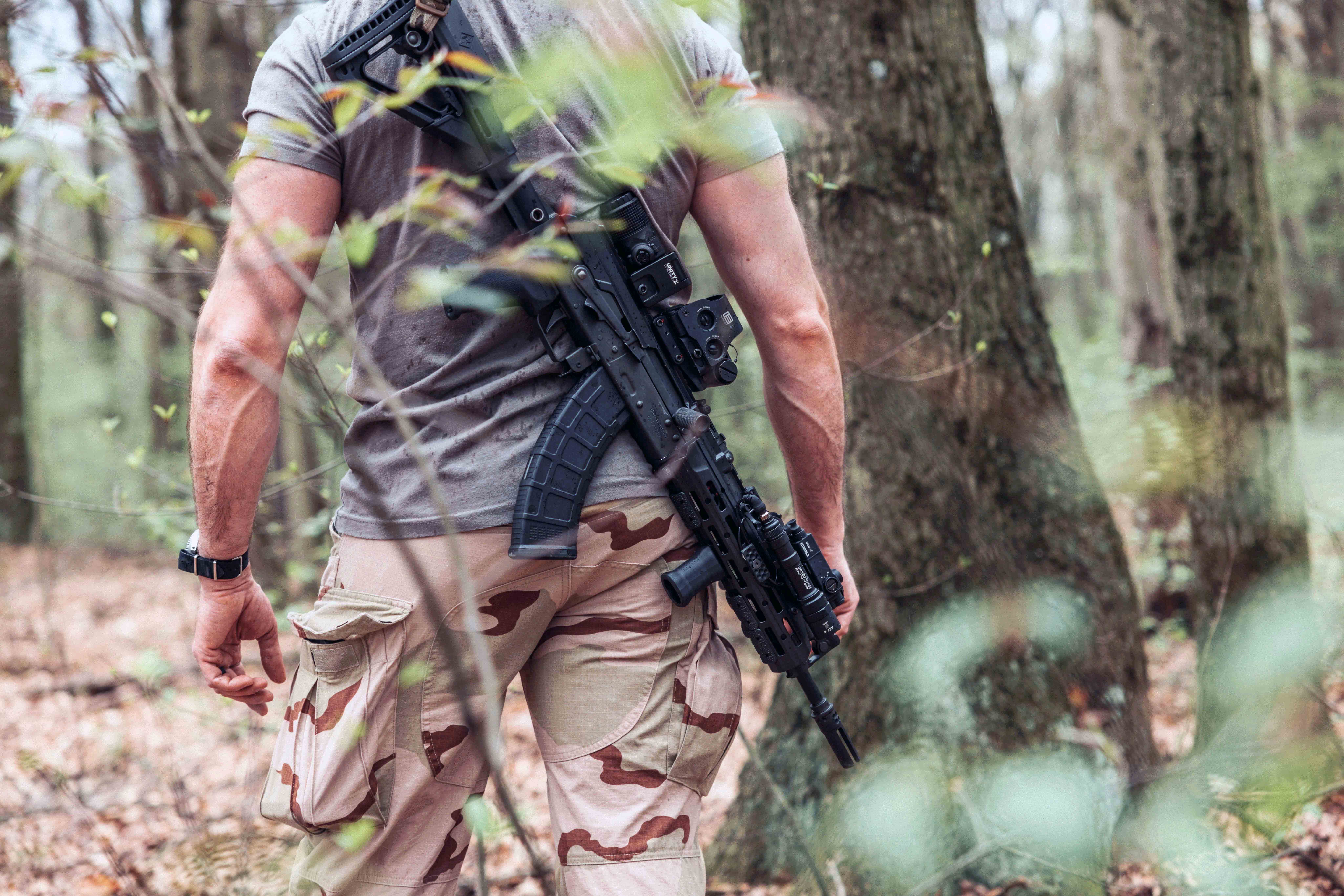
Our community has long been divided between “AR Guys” and “AK Guys.” Both claim their preferred rifle is superior for a litany of reasons. AR guys will say their rifle is more accurate, lighter weight, more modular. AK guys will say their rifle is more reliable, fires a harder-hitting round and is proven in more conflicts. Both sides have strong points.

I consider myself an AR guy. I have been issued and went to war using various configurations of the M16/M4 family and am most familiar with their manual of arms. I have a lot of experience with AKs and have even used them from time to time outside the wire, although most of my experience with AKs comes from being on the wrong side of them.
Admittedly, I always looked at the AR family as a more elegant rifle. While the AK family looks crude and features poor ergonomics, the AR family has pleasing aesthetics, great ergonomics and modularity for days. The modular aspect is the real clincher. As the battlefield modernizes, so too must the small arms.
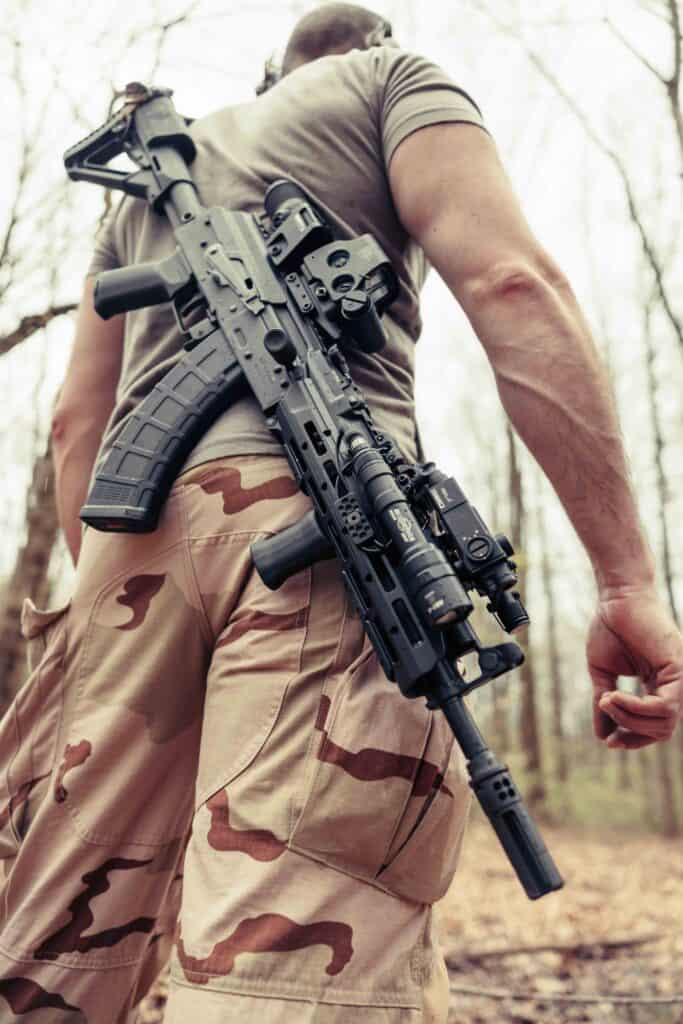
Eugene Stoner and Mikhail Kalashnikov never dreamed of the need for accessories that are so commonplace on warfighters’ weapons today. And while the AR design serendipitously lends itself to modernization and modularity, the AK’s journey to the modern battlefield has been clumsy at best.
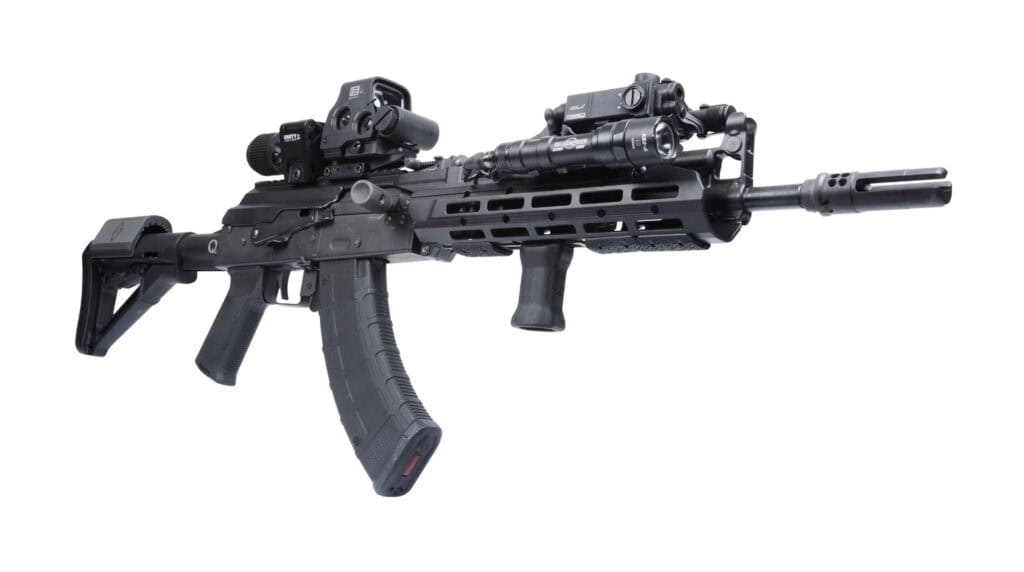
The AK-47 assault rifle was designed in 1945, went to official military trials in 1947, and went into active service with the Soviet Army in 1949. At the time of this writing, the basic design is almost 80 years old. And it is still one of the most ubiquitous designs in armed conflict today. It seems that any self-respecting despot arms his troops with an AK-pattern rifle. The most common AK variant is the AKM, which was first introduced in 1959.
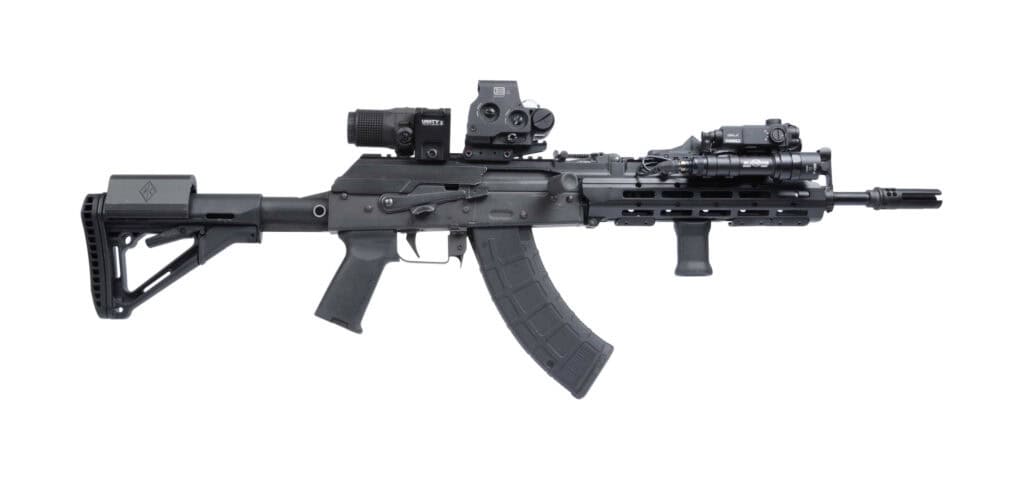
It featured upgrades to the original design to aid in faster manufacturing. The most noticeable change was a lighter stamped receiver replacing the heavier milled receiver. For decades the AKM saw use in conflicts across the globe and remained relatively unchanged. In 1974 the Soviet military began replacing the AKM with the AK-74, which fired a new 5.54x39mm cartridge. But the operating system, main components and design remained the same. Even the latest version of the AK, the AK-103 (designed in 1994), is essentially the same rifle that saw service throughout the Cold War.
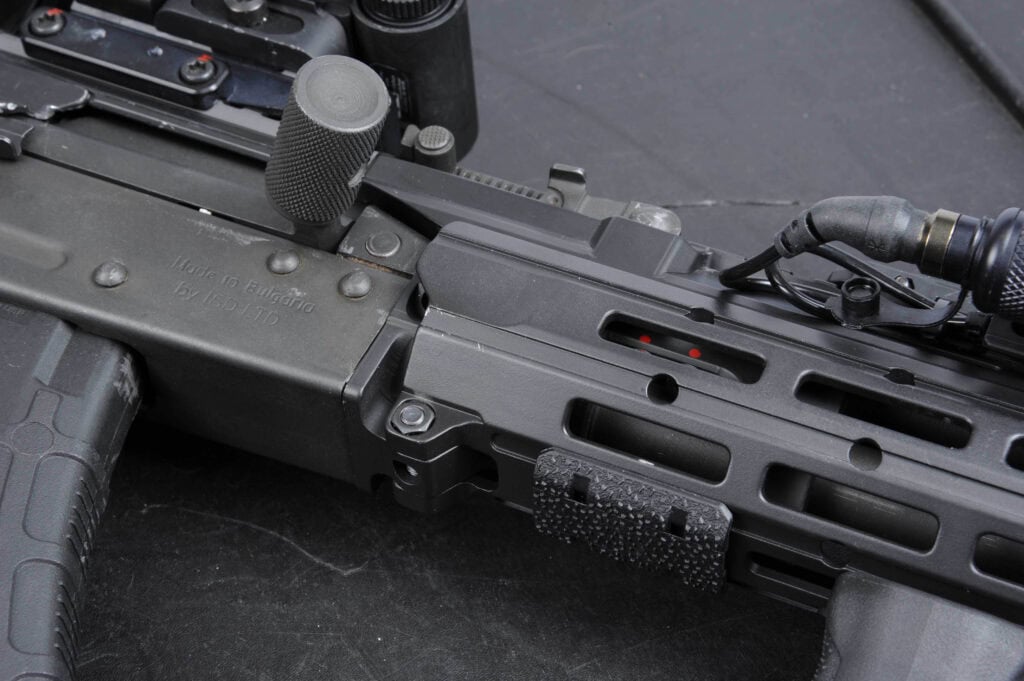
The biggest drawback I saw to the AK family was that it could not keep up with the times. Today’s armed conflicts require accessories such as red dots and magnified optics, weaponlights, lasers and silencers. The AK’s basic design does not lend itself well to these things. While the dust cover is designed for mass production and easily removed for field-stripping, it is not a stable base for optics.
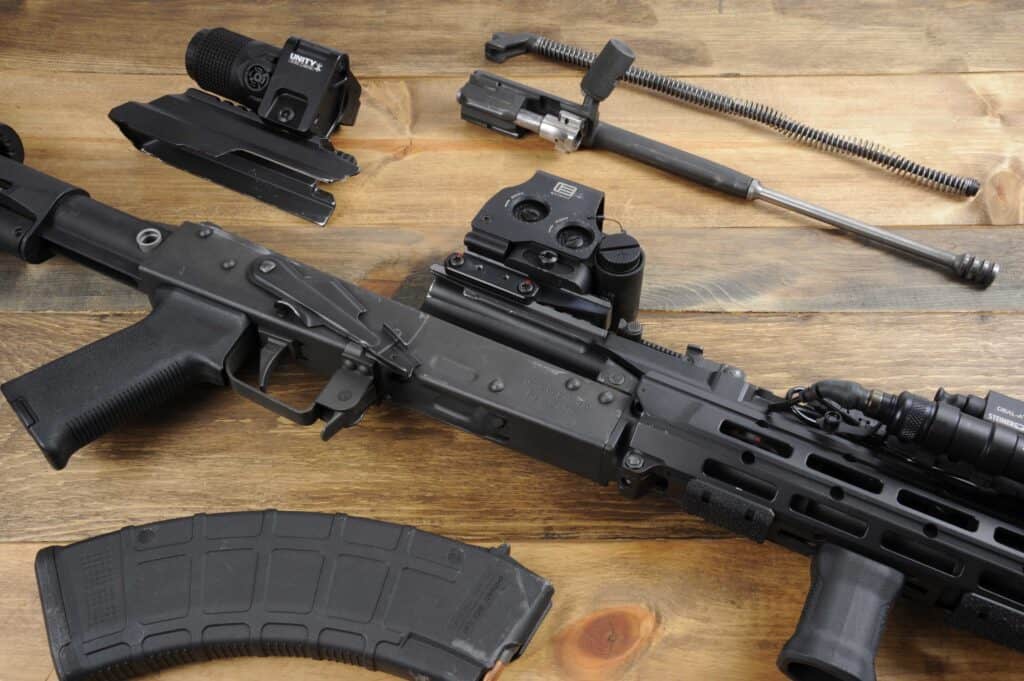
Some companies have developed dust covers with M1913 Picatinny rails. But the rifle’s design means that these covers fit rather loosely and a repeatable zero for anything mounted to them is a pipe dream. The original solution was a side scope mount. These would attach to the actual receiver and extend up the side to place a scope mount surface suspended over the dust cover.
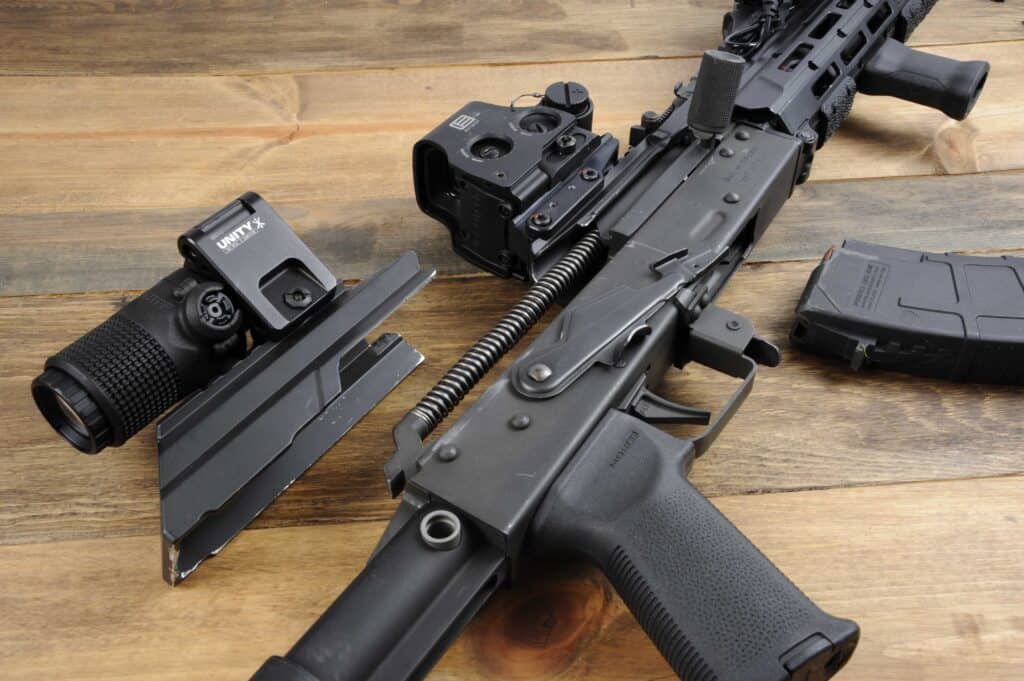
The dust cover was still able to be removed for maintenance. While stable, these mounts require the rifle to have a built-in receiver rail interface. And since most AKs do not have this interface, the side scope mount is a relatively poor option. This pretty much left AK users with the option of replacing the handguards with rails and packing their optic, light and laser onto a very small surface.
It is for these reasons that I have long overlooked the AK as being a viable modern-day weapon platform. Nevertheless, I still had an old AKM in my collection that sat in the back of my safe. I bought my Armory USA AKM years ago at a local gun show. (That should tell you how long I’ve had it, because who still goes to gun shows?) I figured any collection should have at least one AK.
Last year I made the decision that I wanted every gun in my collection to be modernized and capable of accepting current accessories in a usable way. I was able to accomplish this easily until I got to the back of my safe and found my old AKM. But before it went on GunBroker, I decided I’d start looking around to see if there were any meaningful advancements in AK technology.
Naturally, there were plenty of AK purists who occupied the camp of “keep that shit off my AK.” I guess they preferred to fight the communists/zombies/terminators with 1940s technology. A bold strategy, but I respect that. Some further digging uncovered a lot of handguard replacements with little rails that would put all the accessory weight on an already-heavy gun at the front. This was not ideal.
Not only would the balance be thrown way off, but the human interface with these necessary accessories would be horrible. AK handguard rails provide barely enough room for the accessories, let alone placing them in optimal locations with thoughtful placement of remote switches and controls. Again, not an option I liked.
I wanted my AKM to host an optic suite, weaponlight, multifunction laser and remote switches. And I wanted the accessibility of these items to be, well, optimized. I wanted to be able to run modern equipment on my AKM as if it was an AR. There—I said it. The first thing I did was send my AKM to CW Gunwerks in Miami, Florida, for a barrel job. I had them change the classic AKM profile barrel, front sight and gas tube to a 14.5-inch threaded barrel profile with a front-sight gas tube.
CW pinned and welded a SureFire AK War comp muzzle device so I could run my SOCOM .30 caliber suppressor. I replaced the stock trigger with an ALG AK Enhanced trigger with Lightning Bow, added a Power Custom hammer and trigger pin retainer plate, and a Krebs Custom Mk VI enhanced safety. For furniture, the old wood came off and was replaced with a Magpul MOE AK-47 pistol grip, a VLTOR AK receiver extension, and Magpul stock.
But the real upgrade came in the form of a Sureshot USA MK3 chassis system. Sureshot Armament Group is a Russian manufacturer of AK components. And if anyone knows AKs, it’s the Russians. Sureshot USA is the authorized North American manufacturer for Sureshot Armament Group. That means that all their products are made right here in the United States (yay).
And while I know AR accessories and components, I am admittedly naïve about AK stuff. A buddy recommended I check Sureshot out on Instagram (@sureshot_usa) and I was immediately struck by the clean design of their parts. But did everything function as good at looked? After all, the AKM is nothing if not functional. So, I figured, “In for a penny; in for a pound.”
Upon receiving my chassis, I was immediately impressed with the fit and finish of the product. Working for Unity Tactical has taught me that good-looking production is harder than it sounds. The Sureshot USA MK3 Chassis was beautiful right out of the package. No tooling marks, and flush seams. Being an AK product, I sorta expected to need a bastard file, mallet, hand saw, and a plow with oxen to fit it up to my AKM. But the installation was smooth. Everything fitted up, inserted and secured to the host rifle as if it was always there.
So, what is the big deal with the MK3 and why did I put a $700 chassis on a $500 rifle? I was originally drawn to its monolithic rail. My biggest issue with the AK platform’s modernization attempts has always been the inability to mount optics. The side rail mounts require a side rail adapter that is permanently installed to the receiver. And the mounts themselves are easily bent.
I know that statement will probably illicit unintelligible screeching noises from the AK purist crowd, but ask me how many bent side-rail mount/optic platforms I have seen all over the world. The option for the dust cover rail is not really an option because dust covers loosen up tremendously over time (from use) and are simply not a stable platform for attaching optics. They also require a re-zero or zero confirmation after weapon maintenance.
Again, it’s just not a good solution. The Sureshot USA MK3 features a single-piece mount assembly that cantilevers rearward and becomes half of the dust cover. This rail section occupies the space directly behind the rear iron sight (which does NOT need to be removed) and is large enough to accommodate any red dot optic or one-piece scope mount. The “new” dust cover is finished by a removable rear rail section that installs the same way as the legacy piece. It’s about half the size and still allows for removal of the internal components for weapon maintenance.
The permanent rail for optics is part of a single piece that also creates a free-floating handguard. Beyond the benefits of free-float rails, the optic mount rail section is rock-solid and not at all disturbed by basic weapon maintenance. This feature alone makes the MK3 worth the investment. The MK3 mounts to an included “barrel nut” assembly. After installation, the chassis mates up perfectly with the stamped receiver of an AKM.
A lot of AK handguard replacements do not pay attention to resolving the shapes between the squared-off AKM receiver stamping and the rounded handguard or rail. This often leaves a sharp corner of metal that loves to gouge your hand. The MK3 finishes this intersection and closes it off completely. Not only is this aesthetically pleasing and easier on the support hand, but it helps keep debris out of the receiver.
The MK3 also features an integral gas tube that is shorter than the traditional part. It helps to maintain the free-floating barrel by not contacting the rear sight block. And the surrounding top rail geometry works with this new gas tube to provide really good heat management. This leads me to the next important feature of the MK3: the ability to mount a laser at 12 o’clock. This is the best place to mount a laser.
Legacy AK rails require side-mounted lasers because the top handguard rail was occupied by the red dot sight. This is no longer the case and the laser can go where it’s supposed to go. The AK family already has funky ergonomics and manual of arms compared to an AR. So thoughtful placement of accessories is extremely important. Remember: The result of attaching lights, lasers and optics to the gun should be ease of use under extreme stress. Simply having them “on the gun” doesn’t count.
The lower rail section provides plenty of room for attaching lights and vertical foregrips. The m-lok rail extends forward for even more mounting options.
So, what about weight? Unfortunately, this is one area I could not escape without a penalty. The Sureshot USA MK3 Chassis adds 12 ounces to the firearm when installed. Light weight was not a requirement in the original design back in the 1940s, so the base rifle is hefty. And you must give something to get something. In this case, I am more concerned with the rifle’s capabilities on the modern battlefield than I am with the weight. After all, physical fitness should be a given.
All of this adds up to an extremely handy rifle that allows for attachment of modern battlefield accessories in a very usable way. This seems to be what the original designers at Sureshot intended all along. At its core, product design should not be about simply making another object for consumers.
The goal should be to allow end users to accomplish something they could not do before, or to make it easier. In this case I (along with many AK-using professionals across the globe) wanted to update my AKM to a weapon system that would provide me the ability to run modern accessories as easily as if I was running an AR. The Sureshot USA MK3 is the solution we have been waiting for.
Sureshot USA
MK3 Chassis System
MSRP: $700
URL: sureshot-usa.com
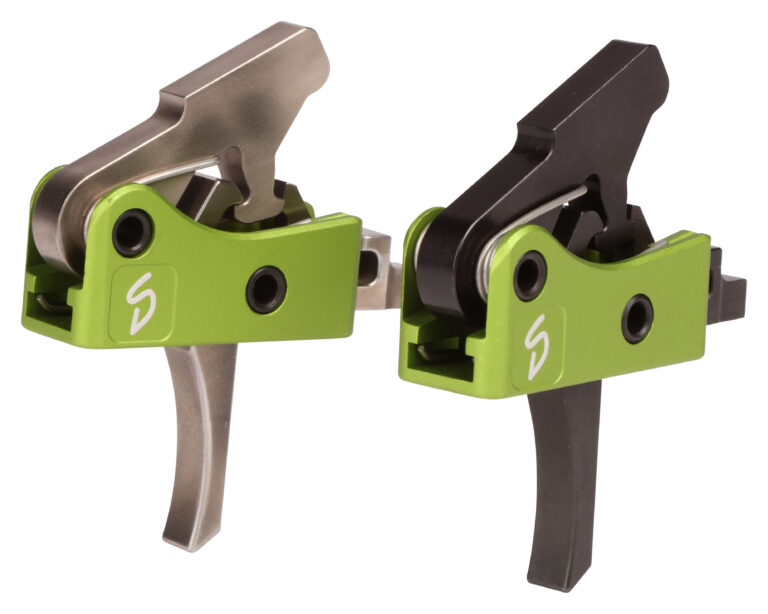
Stern’s H2S was developed with PCC shooters in mind. According to the company, it was created to bridge the gap between mil-spec-style and high-speed, low-drag competition triggers. It’s…

The Strike Industries Extended Magazine Plate For SIG SAUER P320 (9mm) was designed to provide smoother magazine reloading through a slow drag / no snag design while maintaining…
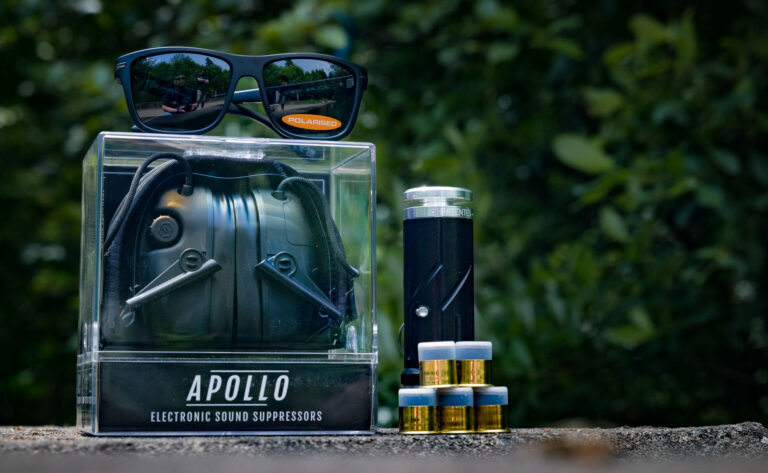
Midnight Breach is a limited-edition gear drop from Midnight Arsenal Box centered around a reusable, civilian-legal distraction device and supported by equipment chosen for practical, real-world use. At…
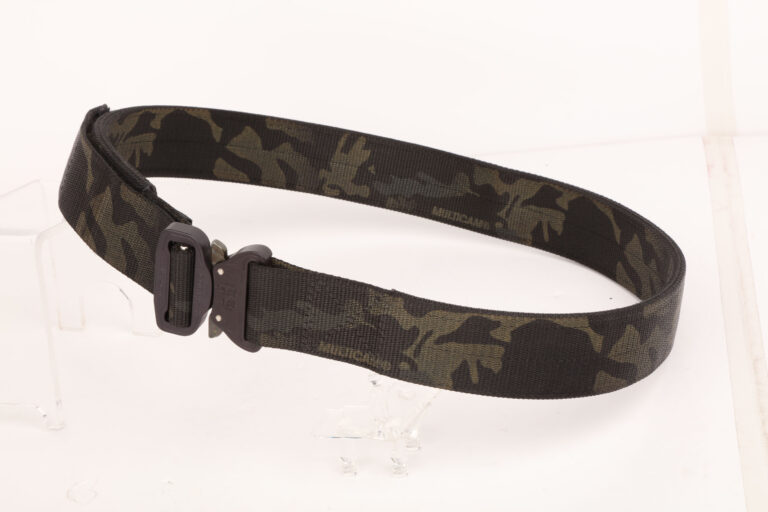
1.75″ Wide Duty Belt Black Multicam This belt comes in both a 1-ply version and a 3-ply version. The 1-ply version is for everyday use and is comfortable…
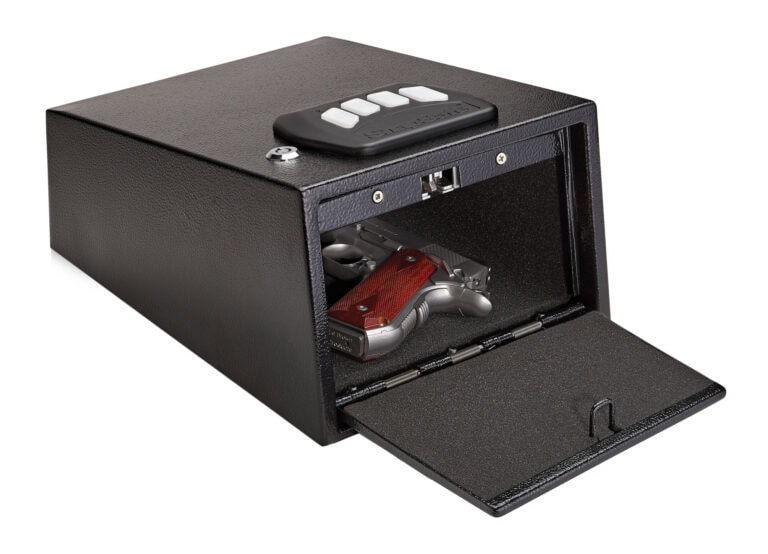
To safeguard firearms from unauthorized access, responsible gun owners know to secure their firearms when not in use. Security is important, but just as important is being able…
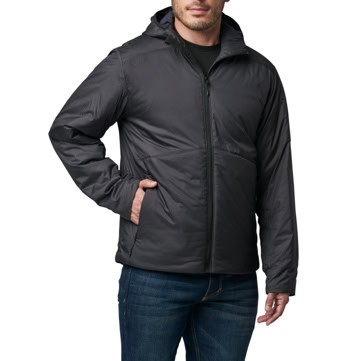
5.11 Tactical just announced new jackets with PrimaLoft Insulation. This insulation brings high quality and performance to the 5.11 style and brand. We’ve been using various 5.11 gear…
© 2025 UN12 Magazine
© 2025 UN12 Magazine
Wait! Don’t forget to